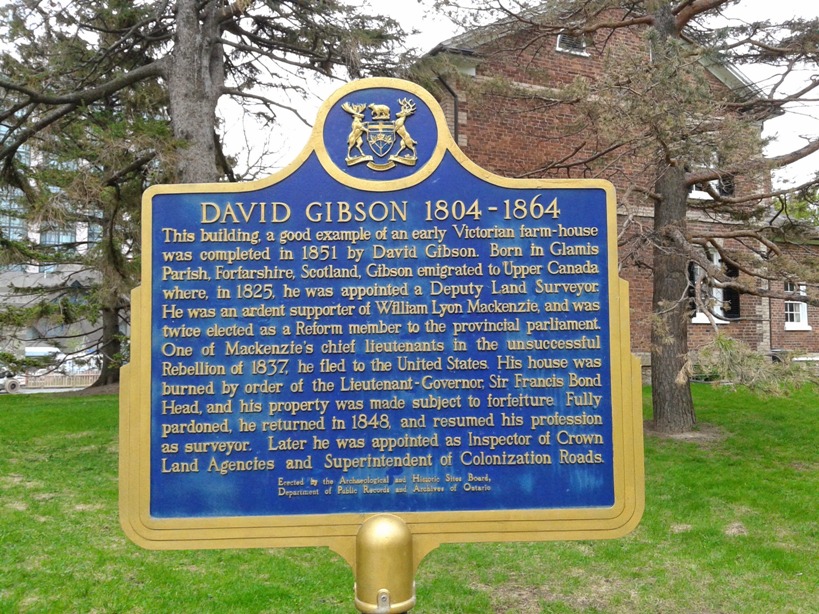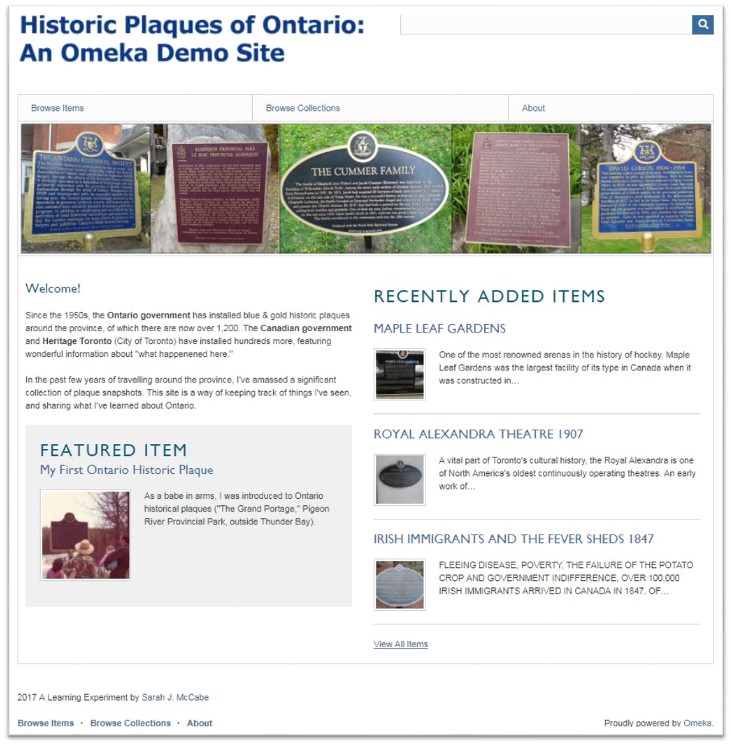A couple years ago at a library technology conference, a respected colleague mentioned offhand that, “You could always make an Omeka exhibit.” While those around me nodded, I had no idea what Omeka was, so put it on my list to find out sometime.
Omeka came up again recently when the Toronto Area Archivists’ Group (TAAG) announced an upcoming introductory workshop. It turned out that Omeka could be something very useful for my work in the heritage and culture sector. I thank my employer for sending me to the TAAG course, taught by University of Toronto Digital Scholarship Librarian Leslie Barnes, which finally demystified Omeka for me.
What is Omeka?
Per Omeka.net, Omeka is a web publishing platform for sharing digital collections and creating media-rich online exhibits. You can:
- Share your collections
Upload and describe items with structured metadata and make them more discoverable. - Create interactive digital exhibits
Combine narrative text with digital media to offer rich interpretation of your collections. - Publish for many platforms
Design one website accessible for phones, tablets, and desktops.
There is a free version of Omeka.net for one site with limited themes and plugins, and a paid version starting at $35/year with enhanced features. (Note that Omeka.net is a hosted service, while Omeka S is a web publishing platform for institutions to install on their own servers, and not the subject of this post.)
There are many excellent Omeka tutorials online (see bottom). The best way I’ve found to understand and imagine what Omeka.net can do is to look at sample sites (again, see bottom).
As a learning experiment, I decided to build my own Omeka demonstration site. What to use for content? Well, in the past few years of travelling around Ontario, without trying too hard, I’ve amassed a collection of snapshots of historic plaques. (A friend has taken to calling them “plagues,” as I’ve been infected with the compulsion to stop and read them all.)
Introducing Historic Plaques of Ontario: An Omeka Demo Site: https://ontarioplaques.omeka.net/. Please enjoy a browse around (… this excuse to indulge a growing obsession). The website features 78 Ontario plaques—federal, provincial, and City of Toronto—as of today.
My own site, a work-in-progress, is a simple collection of images, and does not include an exhibit, with narrative text linking and interpreting the digital media. Nor does it have a map, which I’d really like to add, but which would require upgrading to the paid version (although I might try a workaround?).
One conclusion is that an Omeka.net site would be terrific for smaller museums, libraries, archives, and historical societies, which might not have a robust website or content management system, to showcase their photo (and other) collections. Instructor Leslie Barnes stressed that Omeka.net is not a digital preservation system, though. I can confirm this: when you delete an image, on purpose or by accident, it is gone. Omeka.net has the capacity to host oral histories, videos, and other media in addition to photos, which could prove very useful to local history groups for sharing archival materials.
I think Omeka.net has a lot of potential and I look forward to exploring it further.
Resources:
Omeka.net, Build a Website: Start Here
ActiveHistory.ca, Ian Milligan, DIY Public History: Cataloguing the Past With Omeka
Omeka in a Nutshell, Harriet Green, University of Illinois at Urbana-Champaign
Up and Running with Omeka.net, Miriam Posner, The Programming Historian
Introduction to Omeka – Lesson Plan, Amanda French
University of Calgary: All About Omeka
omeka.net SAMPLE SITES:
Digital Jane Austen
About Deseronto
West Hartford History Online
Hawaiian Historical Society Historical Photograph Collection
bridgesnyc: postcards
How to Track a Bear in Southwark
Omeka (Upgraded Version) Sample Sites:
The People’s Record: Recording the Impact of the London 2012 Olympic and Paralympic Games
Preserve the Baltimore Uprising
Audubon’s Birds of America
Dominion of the North: Literary and Print Culture in Canada
The September 11 Digital Archive
M.B.: Living and Writing the Early Years of Parks Canada
If you found this post interesting, feel free to share it.


